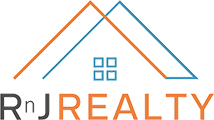For many Australians, owning a prestige property remains the ultimate goal—but what does it really cost to be at the top end of the housing ladder?
In cities like Sydney and Melbourne, entering the top 5% of the property market means spending more than double—often triple—the median house price. According to new data from Cotality, formerly known as CoreLogic, the price gap between a typical home and one in the upper tier is wider than ever, particularly in Australia’s two largest cities.
In Sydney, where the median house price currently sits at $1.435 million, buyers looking to enter the top 5% bracket are facing a starting price of around $4.327 million. In some elite suburbs, the sky’s the limit—with prestige homes pushing past the $100 million mark. That’s a 201.6% difference between the average and the elite.
Melbourne tells a similar story. The median sits at $850,000, but homes in the top 5% start from $2.49 million, marking a 192.9% gap.
Why Such a Big Gap?
This disparity highlights the sheer range of housing stock and quality available in these cities. There’s a broader spectrum of property types, locations, and finishes—which ultimately translates into a wider price distribution.
Experts suggest that this price variation isn’t just about luxury features—it’s also about location, scarcity, and buyer demographics. Many in the prestige market are not first-home buyers. They’re high-income professionals or individuals with significant intergenerational wealth, often buying with large deposits or minimal borrowing.
And while we often think of prestige property as a waterfront mansion trading for $30 million, even a $4 million family home in a top suburb qualifies. It’s all about perspective—and for most Australians, this level of buying power remains highly aspirational.
A Tough Climb for Younger Generations
With housing prices climbing over decades, younger buyers are increasingly priced out of areas their parents once bought into with ease. Where older generations bought homes in now-middle-ring suburbs for modest sums, today’s buyers face dramatically different conditions. The result? Many are forced to look further afield—or out of the market altogether.
Even those who inherit wealth may find it challenging to remain in the same neighbourhoods, especially with limited downsizing options and planning restrictions. Ironically, the resistance to higher-density developments in affluent areas has left few alternatives for retirees hoping to stay local but scale down.
Could Policy Changes Help?
Some economists argue that a shift from stamp duty to broader-based land taxes could encourage more movement within the housing market—freeing up homes for families and improving turnover. Zoning changes in high-value areas may also help create more accessible housing stock, but this remains a politically sensitive issue.
Until then, the upper end of the market will likely remain out of reach for most—an aspirational goal rather than an attainable milestone.
Key Takeaway:
Breaking into the top 5% of the property market means significant capital, savvy financial planning, and in many cases, generational support. While it’s not impossible, the path to prestige is steep—and increasingly out of step with where most buyers are today.



